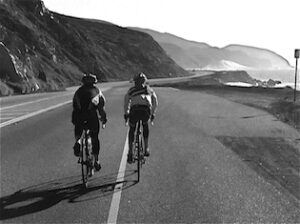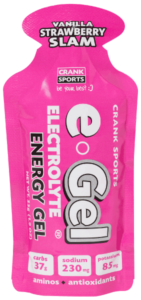Cycling
Cycling
 How to be your best on the bike with a sound nutrition plan
How to be your best on the bike with a sound nutrition plan
Cycling is one of the most popular sports in the world among people of all ages because it is relatively easy on the body compared to the pounding of running or contact sports. However, cycling can also be one of the most physically demanding sports and if you want to improve your performance or just be able to ride further, then developing a sound sports nutrition plan will have many benefits. Unfortunately, many cyclists do all the hard work of training, spend money on expensive bikes, gear and accessories, but when it comes to nutrition they just use water, Gatorade or what ever is cheap and readily available. If that describes you, we have some great news … you can perform better!
The first thing to recognize is that cycling truly is an endurance sport that can push your body to it’s cardiovascular limits, and if you don’t have a well thought out nutrition plan not only will it impact your performance, but it can also increase your risk of injury. We recommend reading our “nutrition keys to success” to learn how hydration, energy, electrolytes, oxygen and blood sugar relates to cycling.
just having fun
Many cyclists don’t compete, but if you’re in the saddle for more than an hour at a time then you’ll want to learn to consume calories on the bike as well as maintain your hydration and critical electrolytes to avoid cramping and injuries.
long rides or competing
One of the golden rules of any sport is to not change things on the day of the event. Whether you’re doing your first century or you’re a seasoned mountain or road cyclist, you’ll perform better if you’re taking in calories (energy) during the event, so learn how to do it in your training. Like anything, your body needs time to get acclimated to processing calories while riding. In addition, with the added energy you’ll be able to train longer at a higher intensity level, thus improving your fitness level … and ultimately your performance on race day.
gels, bars, drinks or chews?
Right off the bat you should avoid energy bars, chews, fruit and any other solid foods for that matter that contain fats, fibers and/or protein as explained in the oxygen discussion of the nutrition keys to success. If you’re doing a century ride, the SAG stops will be filled with peanut butter and jelly sandwiches, cookies and all kinds of other delicious snacks. If you’re just out to have fun then go for it (if you can’t resist). But if you want to feel better and perform better, try sticking to liquids. This may be hard to get used to, but try it … you’ll likely be surprised by the results.
That leaves water, sports drinks and energy gels. So which of these should you use?
Unlike runners that prefer energy gels (so they don’t have to carry the weight of a sports drink), cyclists have the luxury of using either energy gels or sports drinks, or both. If you plan to use both please read this article to avoid potential problems.
using a sports drink …
Sports drinks are the most popular option for cyclists because you don’t have to worry about how much water you are taking like you have to with the gel. A good sports drink is already “isotonic” (so it can be rapidly absorbed) and has the carbs and electrolytes you need, so it’s just a matter of selecting the right one for you and then ensuring that you drink enough.
As explained in our hydration discussion, your body can only absorb approximately 32 ounces of fluid per hour. You can consume as much as you want, but your body will dispose of (via urine) the excess fluid that it is unable to absorb. There’s no point in consuming more than the body can process, and no one wants to have to take more bathroom breaks then necessary. So keeping in mind that a standard cycling bottle is 24 ounces (often range from 21 oz to 26 oz), then you could consume one bottle about every 45 minutes. If it’s cooler and you’re going at a lower intensity level then you can get away with less. But if you are going hard and desire to perform at your best then you should try to get your fluid intake up to this level.
Many cyclists fail to get adequate fluids and they “feel fine”, but the single easiest thing you can do to improve your performance is to ensure that you are fully hydrated. Virtually every study that has been done on hydration has shown that even the slightest levels of dehydration will impact performance. And the more dehydrated you are the worse your body will perform. Try it in your training, you’ve got nothing to lose and everything to gain. You may even avoid some cramping and injuries while you’re at it!
which sports drink should you use?
There’s no shortage of sports drinks to choose from, but the majority have one of two problems: either they are loaded up with simple sugars or they use artificial sweeteners and sugar substitutes. They do this for several reasons (sugar is cheap, sweet things sell, easy to manufacture, etc.). The problem with lots of sugar is covered in our energy and blood sugar discussions, but in summary you can uptake more energy from a drink using complex carbohydrates and you can avoid blood sugar spikes and crashes. The problem with the artificial sweeteners and sugar substitutes is that they are notorious for causing gas, stomach discomfort and even diarrhea.
Our e-Fuel drink is an excellent choice and it has been designed with all five nutrition keys in mind. e-Fuel is loaded with complex carbohydrates, contains very little simple sugar and it is 100% natural with NO artificial flavors, colors or sweeteners – it’s just clean energy that you can drink for hours and hours on the bike.
If you’re like most cyclists you’ve tried several sports drinks and it’s difficult to determine the pros and cons of each, To help you understand the differences and how they stack up, we have compiled detailed comparisons of the most commonly used products:
using an energy gel …
Energy gels have an advantage in that they are super convenient, and you can load several packs in your jersey for long rides. But they require a little more thought then a sports drink to ensure that you are using them right …
Most people know by now that if you’re using an energy gel (and this applies to ALL energy gels), you need to take water to properly absorb the gel (see discussion). If you try to take a sports drink like Gatorade or any other drink with calories, it will not dilute the gel down to the isotonic level. This is a recipe for disaster. Not only will the absorption be delayed, but your body will try to take care of it on it’s own by drawing cellular fluids back into the gastrointestinal (GI) track (via reverse osmosis) so that it can dilute down the gel. This can lead to temporary dehydration, severe GI discomfort, cramping and possibly make you sick. If you’ve ever experienced stomach discomfort or worse with energy gels it’s probably because you didn’t use enough water or you used something other than water to wash it down. Use water!
 So if you go with energy gels, which one should you use? Obviously we are going to recommend e-Gel, but for very good reasons. Compared to other energy gels, e-Gel is very low in simple sugar but loaded with complex carbs, which is a good thing. It’s also a thinner consistency then most other gels so it’s easier to get down without chocking on it. But one of the most important differences between e-Gel and the competitors is that it has all of the electrolytes you need right in the gel. Since you need to take water with your energy gel this is a big deal, because if you’re using another energy gel you’ll have to figure out how to replenish your electrolytes that are critical for maintaining hydration and avoiding cramping and injuries.
So if you go with energy gels, which one should you use? Obviously we are going to recommend e-Gel, but for very good reasons. Compared to other energy gels, e-Gel is very low in simple sugar but loaded with complex carbs, which is a good thing. It’s also a thinner consistency then most other gels so it’s easier to get down without chocking on it. But one of the most important differences between e-Gel and the competitors is that it has all of the electrolytes you need right in the gel. Since you need to take water with your energy gel this is a big deal, because if you’re using another energy gel you’ll have to figure out how to replenish your electrolytes that are critical for maintaining hydration and avoiding cramping and injuries.
It’s important to understand that water is the transport vehicle that carries the energy gel into your cellular system. Another way of looking at it is that the water dilutes the gel down to a concentration that is equal to the concentration of your cellular fluids (referred to as “isotonic”), at which point the solution can be absorbed via osmosis.
Each pack of e-Gel requires approximately 14 ounces of water to bring it down to the “isotonic” level, so the amount of gel that you consume is largely dependent on how good you are about drinking water during your training and races. However, as explained in our hydration discussion, your body can only absorb approximately 32 ounces of fluid per hour. You can consume as much as you want, but your body will dispose of (via urine) the excess water that it is unable to absorb. That being said, if you are consuming near the maximum amount of water (32 oz/hour) you could take an e-Gel about every 25 minutes. Most people will take 1 to 2 per hour based on water consumption, level of intensity, etc.
Do I have to take 14 ounces of water every time I take a gel?
No. What’s important is the ratio of water to gel over time. When you start your ride, assuming you are properly hydrated, you will have about 30 ounces of available water in your stomach and GI tract. That water can be used to process gels, but your body will also be using it up as you ride. What’s important is to maintain your hydration throughout the ride and we recommend continuing to drink in regular intervals. On a bike this is pretty easy. As long as you are doing this you can just take a swig of water after eating a gel, and then just continue to drink as normal.
Using other energy gels ...
Obviously there’s a wide selection of energy gels out there and many of them are good products used successfully by lots of cyclists. To help you understand the differences and how they stack up, we have compiled detailed comparisons of the most commonly used products:
get it dialed in…
What ever you do, we strongly recommend that you do lots of testing with your nutrition plan during your training to figure out what works best for your body. Like most things, what works best for you is probably slightly different than what works best for your training partners.
Enjoy the ride!

